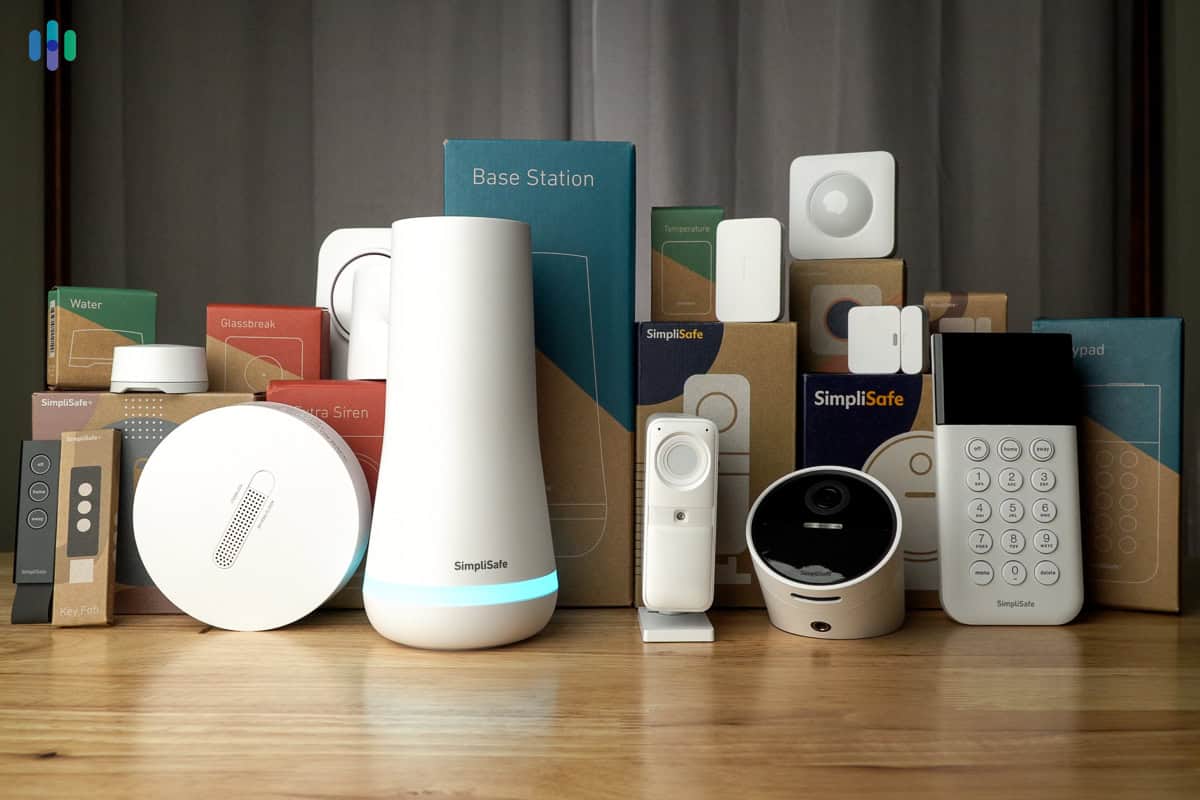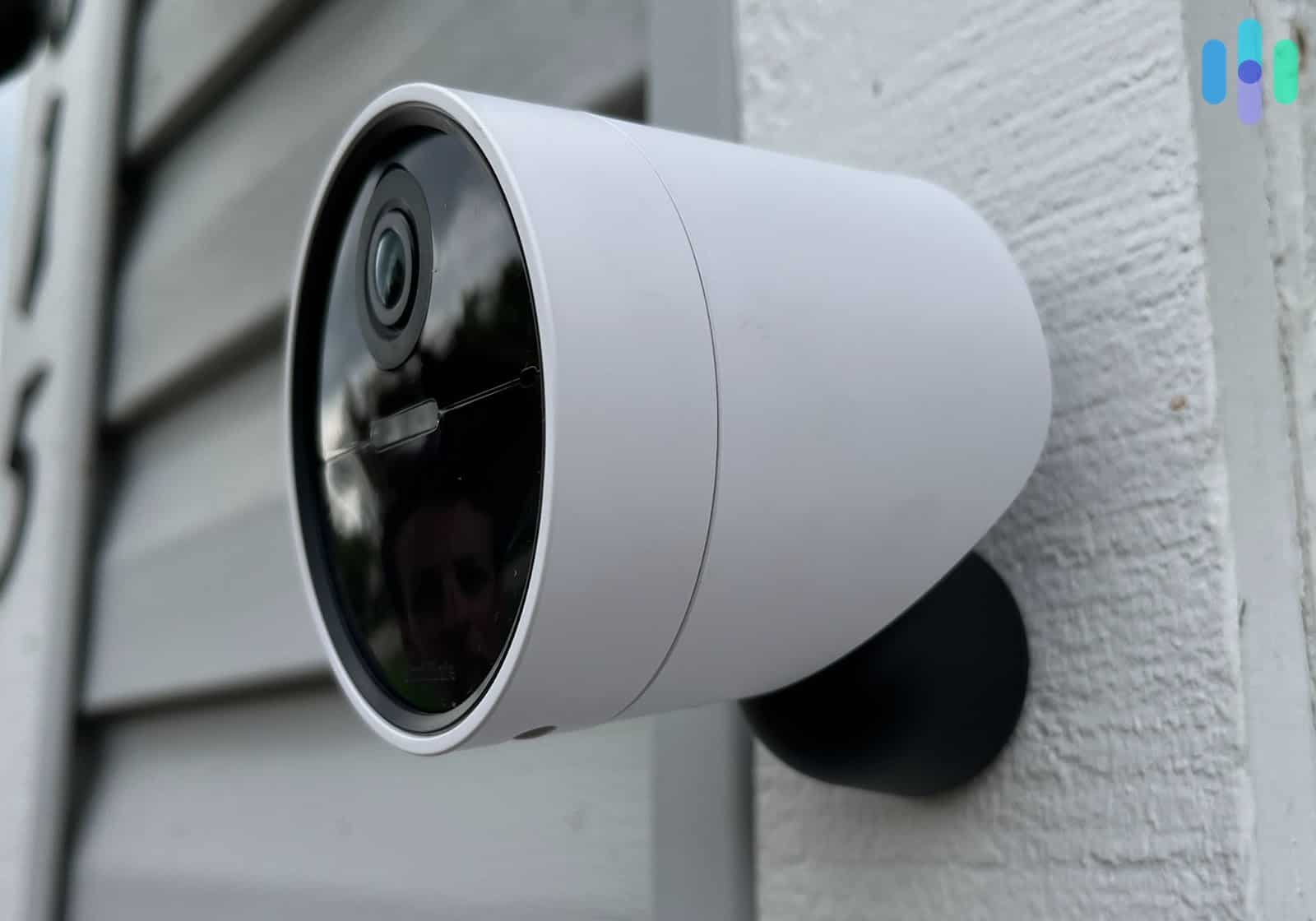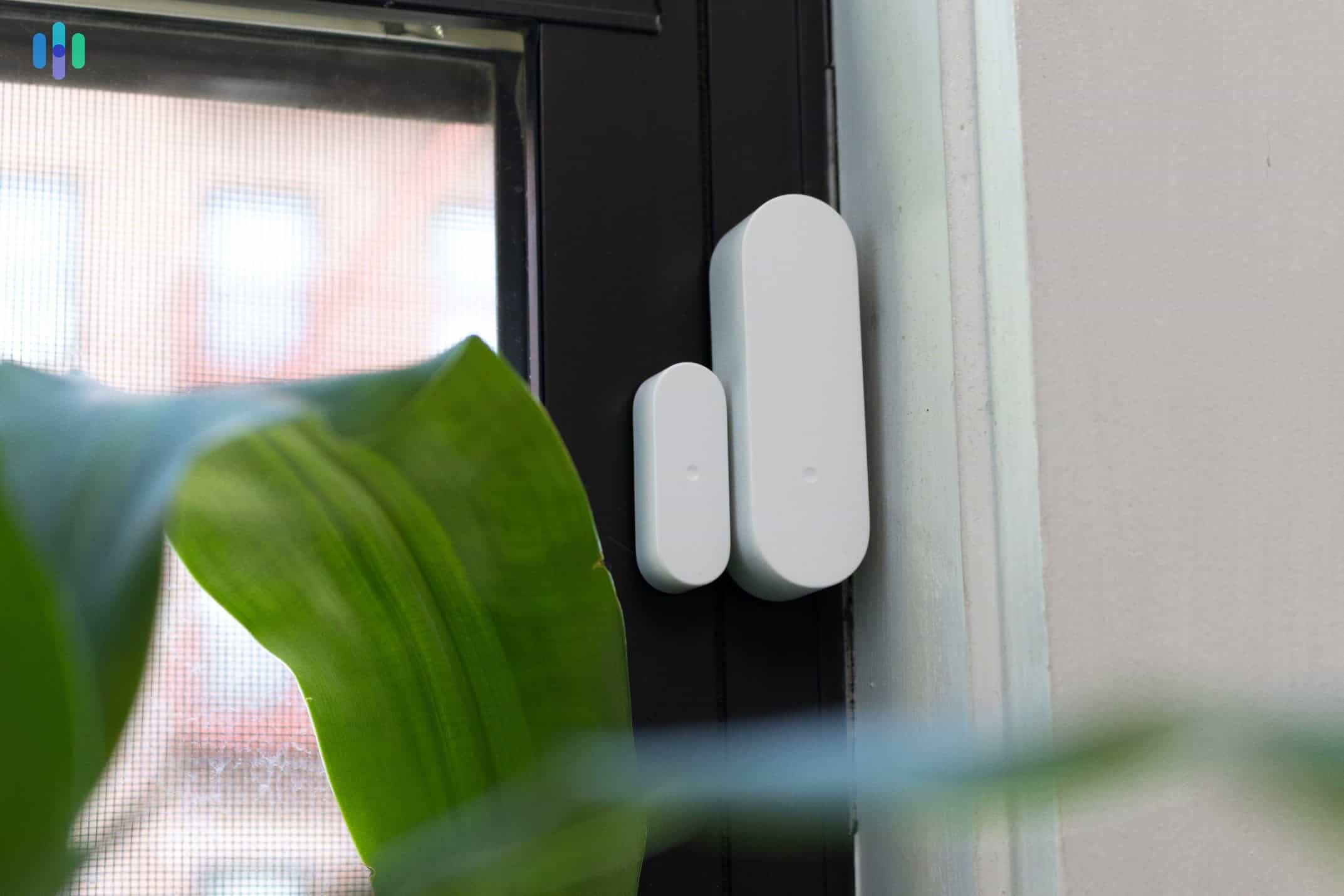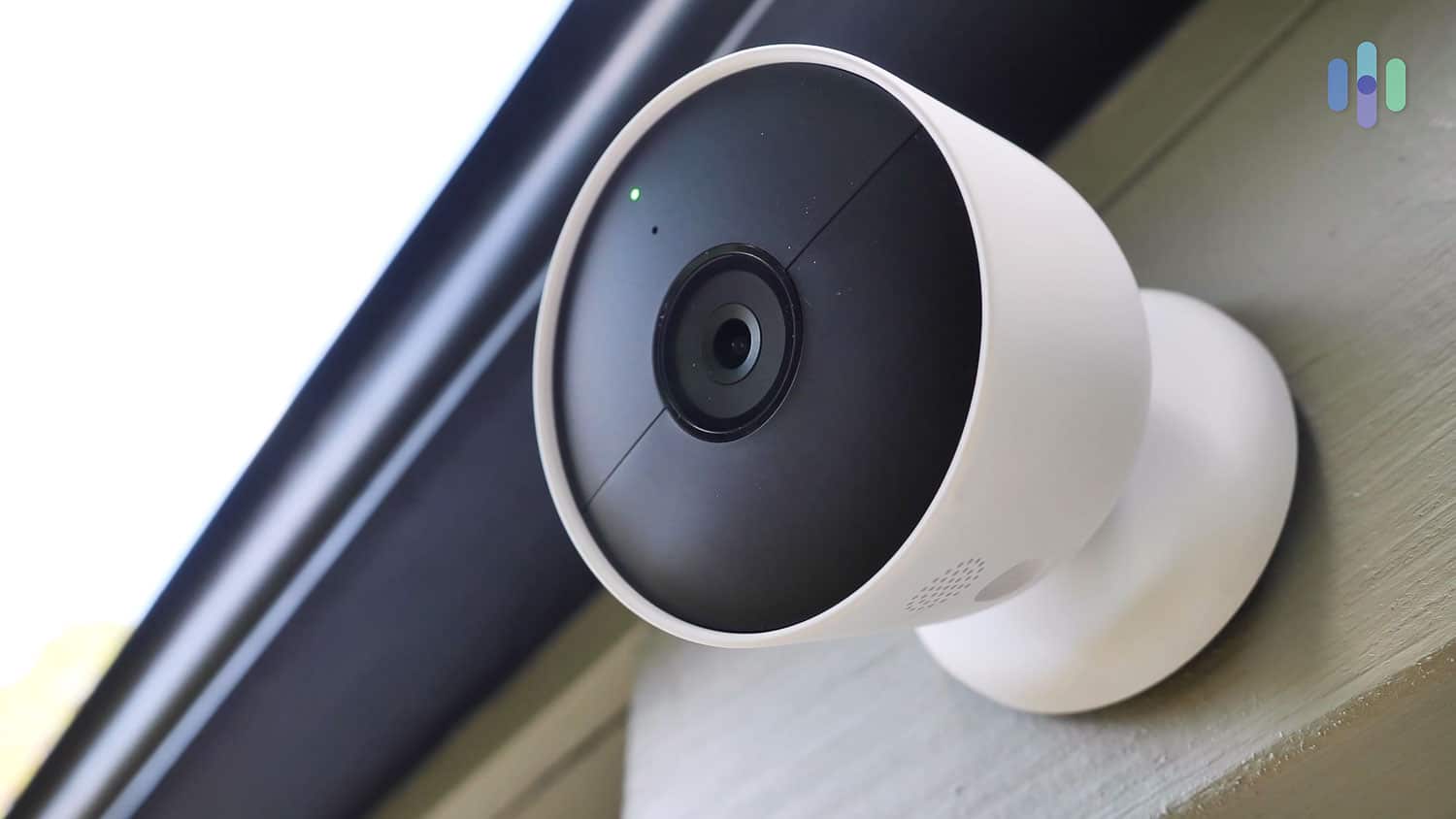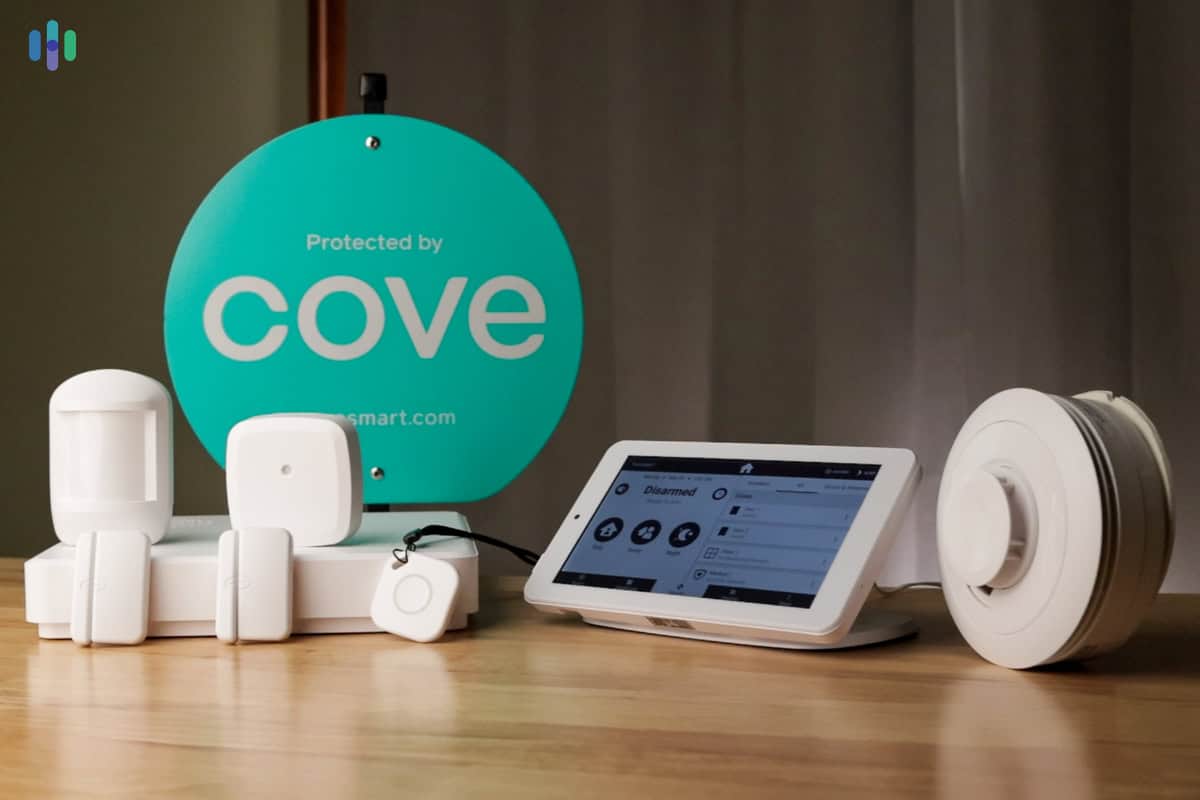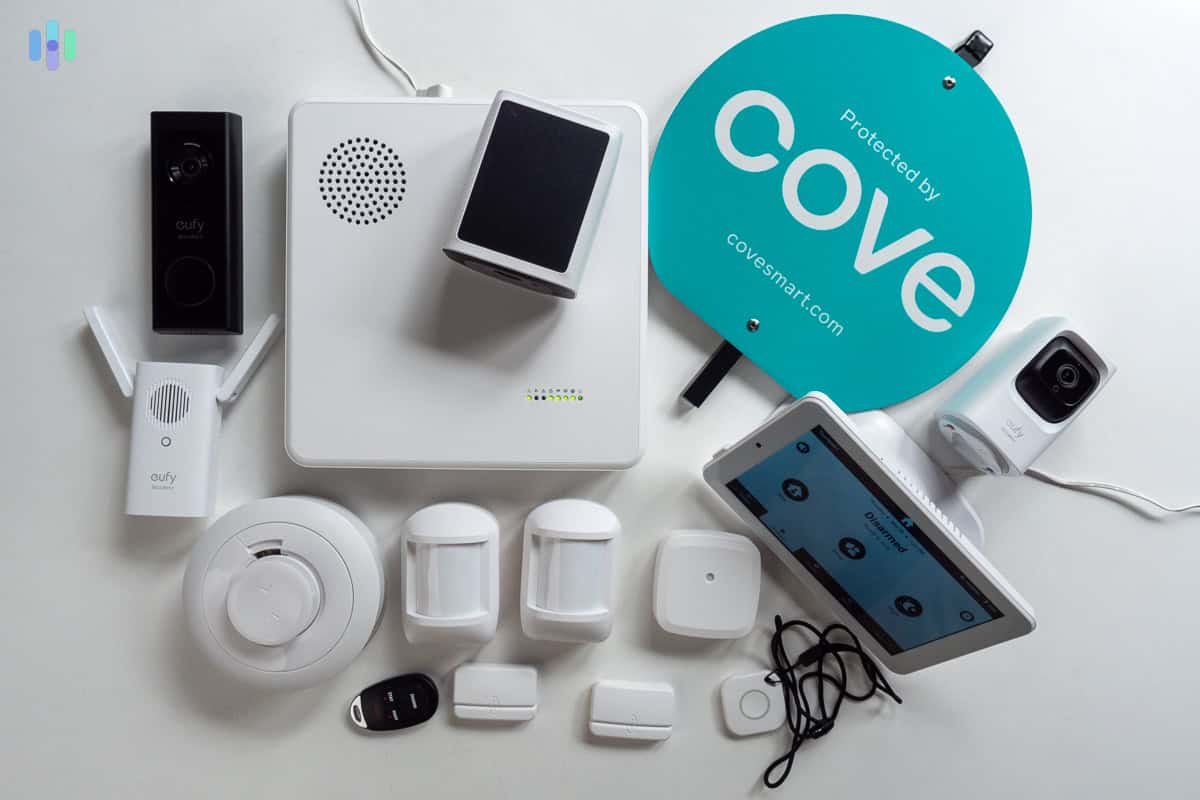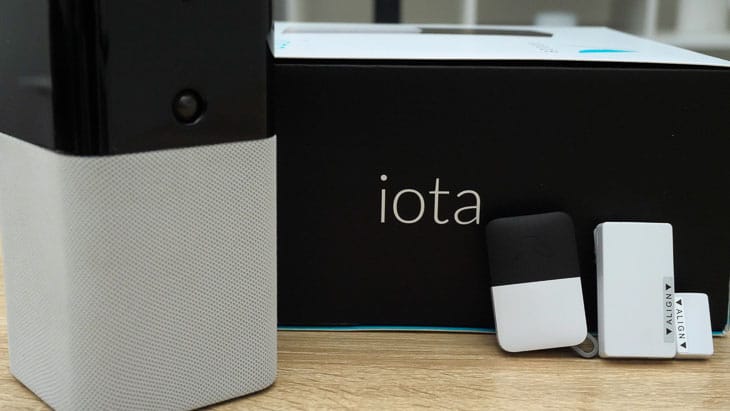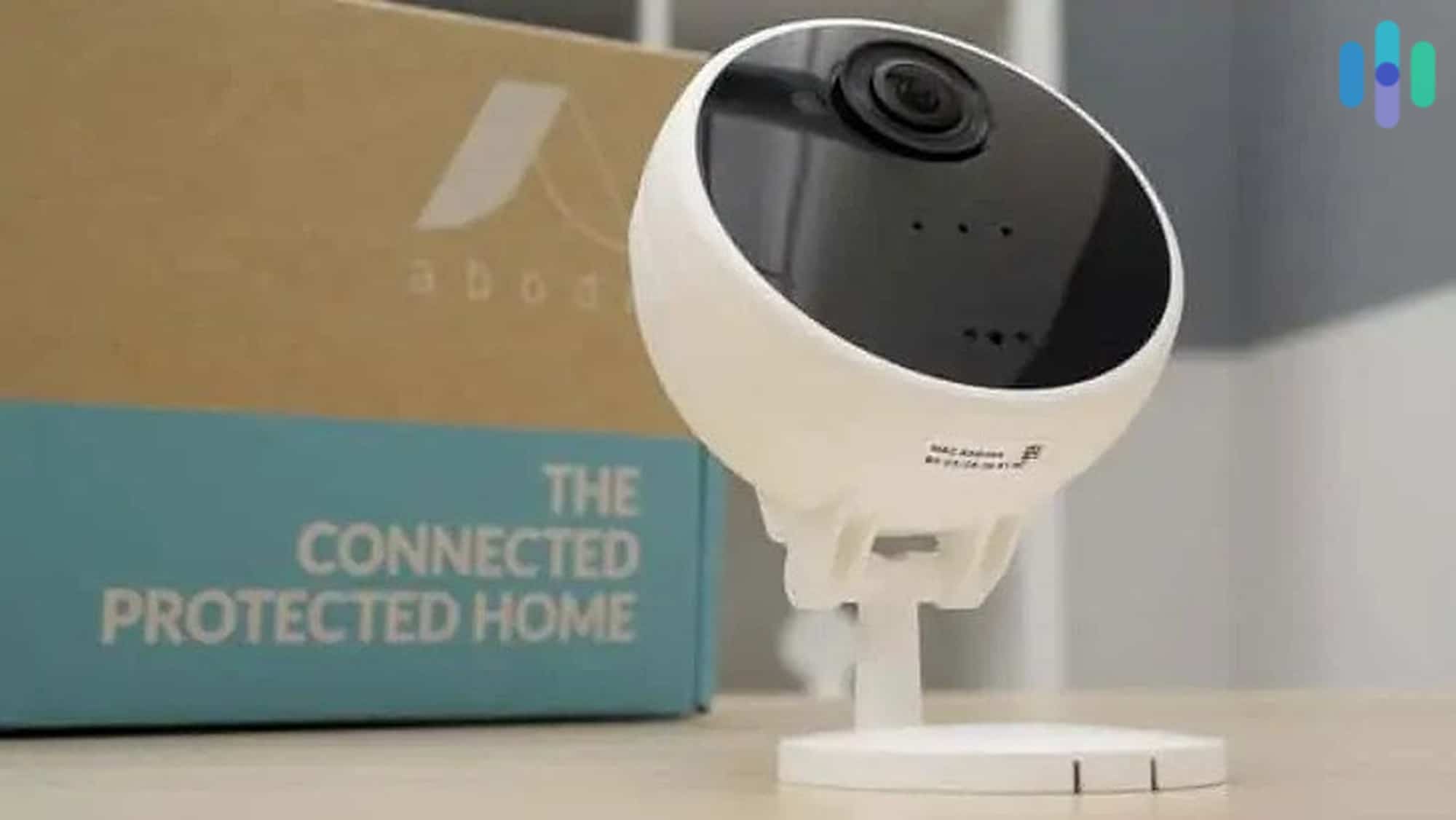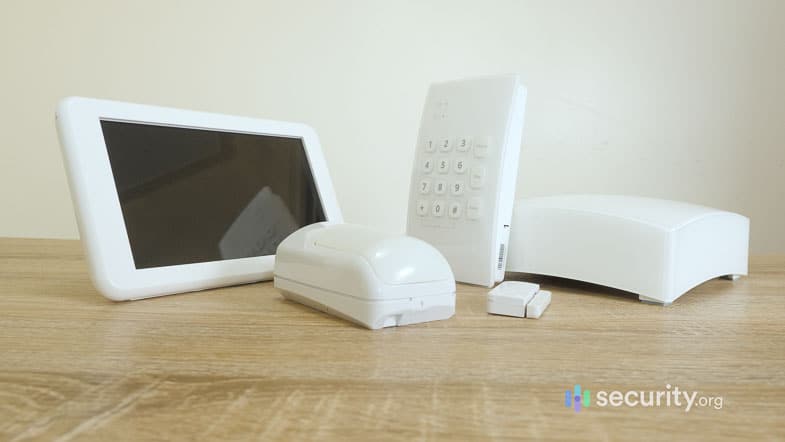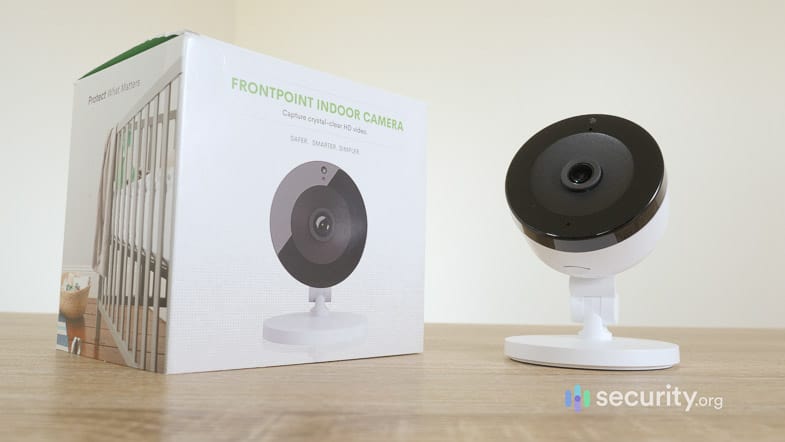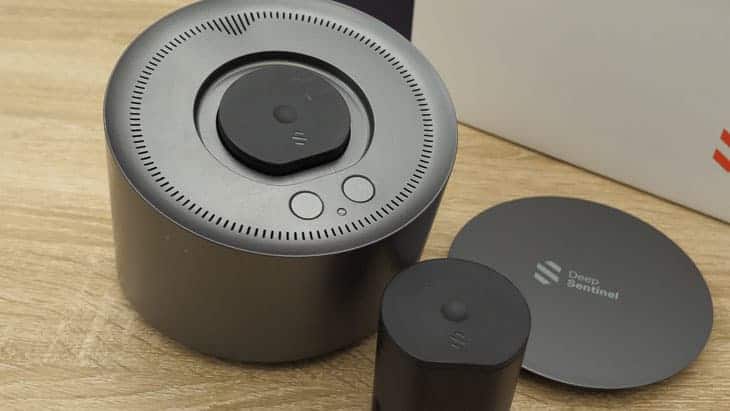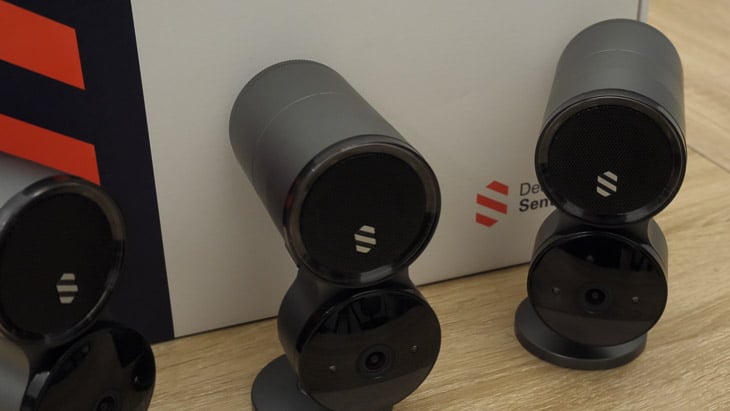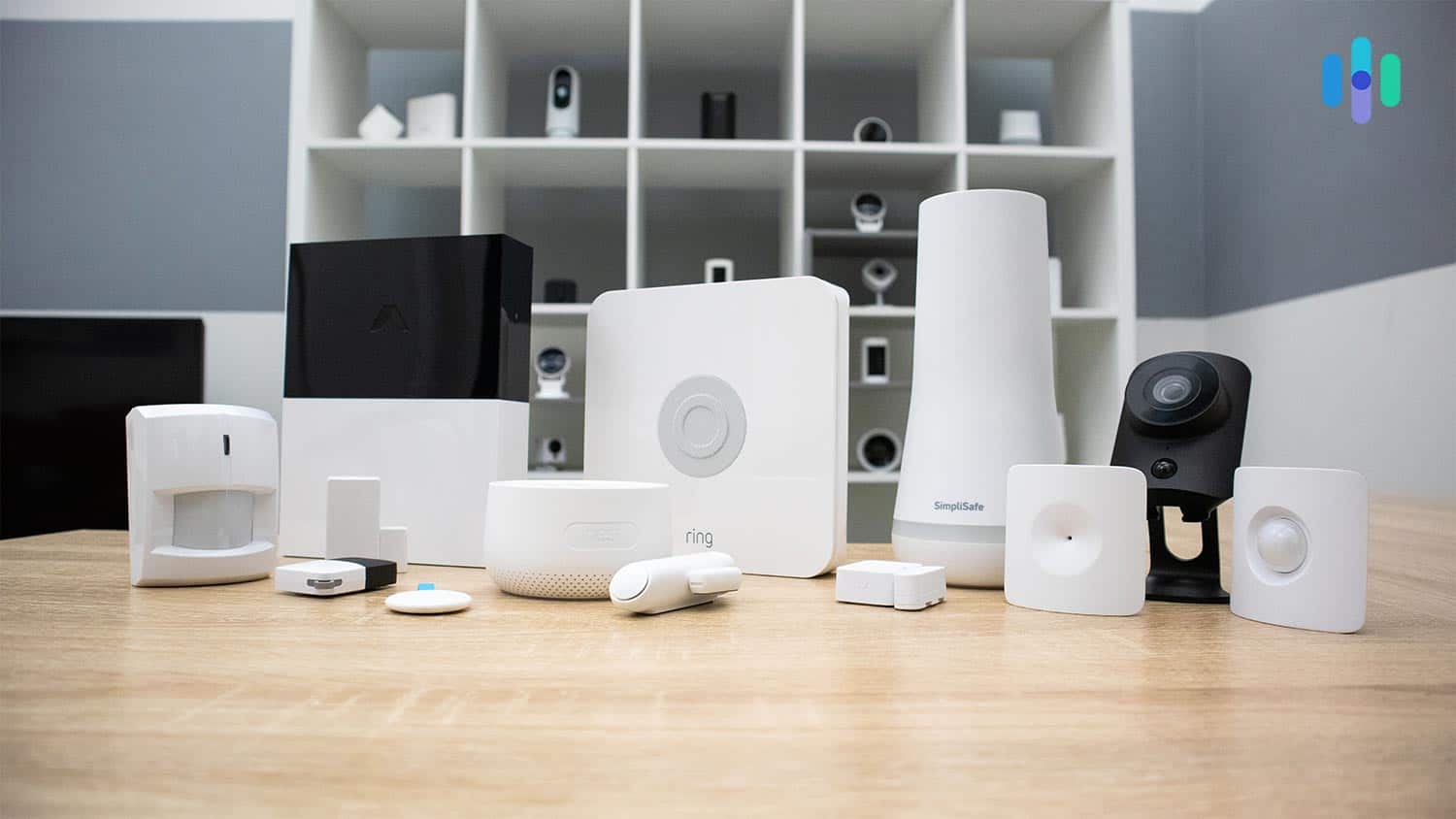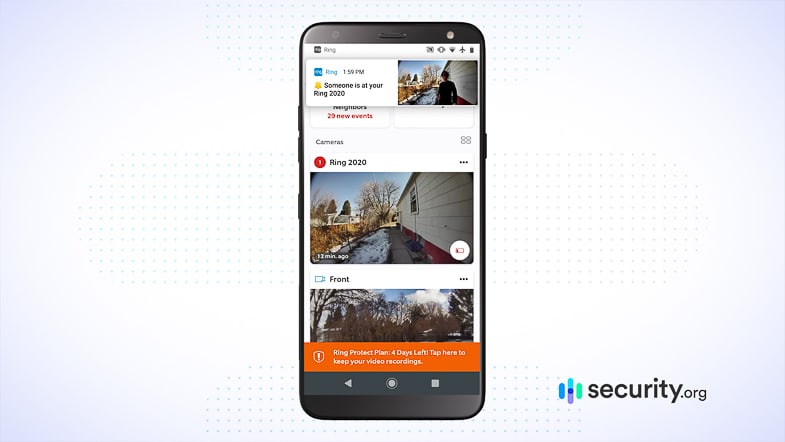The Best DIY Home Security Systems of 2025
SimpliSafe is a simple and affordable security systems, but it offers advanced crime-busting features such as Intruder Intervention and Active Guard.

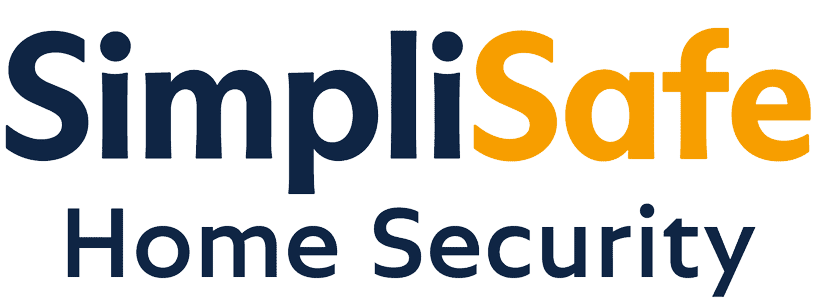
- No need for professional installers
- Easy to set up voice commands and routines with both Alexa and Google Home
- Pick out the components that are right for your particular living situation
- No need for professional installers
- Easy to set up voice commands and routines with both Alexa and Google Home
- Pick out the components that are right for your particular living situation
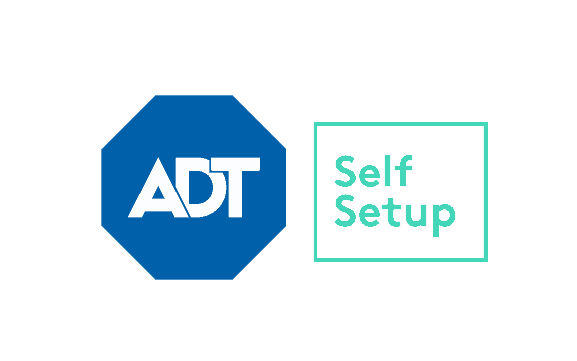
- Mix of ADT and Google Nest equipment
- High-end security cameras with person and package detection
- Nest Aware subscription included in Essential + Video plan
- Mix of ADT and Google Nest equipment
- High-end security cameras with person and package detection
- Nest Aware subscription included in Essential + Video plan

- Affordable equipment and frequent deals
- Systems are fully customizable
- Ships pre-paired sensors and equipment
- Affordable equipment and frequent deals
- Systems are fully customizable
- Ships pre-paired sensors and equipment
Did you know that many DIY home security systems don’t require you to pick up a single tool? Some indoor cameras sit on bookshelves. You can stick motion sensors to walls with adhesives. Even several video doorbells don’t require any hardwiring.
After installing dozens of security systems ourselves, we chose SimpliSafe as the best DIY option. It offers affordable packages and industry-leading security features, and the entire set-up took us less than an hour. But besides SimpliSafe, we also liked what we saw from ADT, Cove, abode, Frontpoint, and Deep Sentinel. Here are our test results and why we think these systems should protect your home.
>> Learn More: The Best Security Systems of 2025

The Best DIY Security Systems, Ranked
- SimpliSafe - Best DIY Installation and Monitoring
- ADT Self Setup - Best Equipment
- Cove - Most Affordable
- abode - Most Flexible Monitoring Options
- Frontpoint - Best Customer Service
- Deep Sentinel - Best Video Monitoring
How We Compared DIY Security Systems
We’ve been comparing security systems for many years, including both those you install yourself and those installed by a technician. To make apples-to-apples comparisons across the entire home security spectrum, we focus on both the equipment and the monitoring options available.
- Equipment: Not all security systems are the same. Some focus more on sensors, while others have a wide selection of security cameras. Choose a security system that offers equipment that meets your security needs.
- Monitoring options: We highly recommend professional monitoring, but not everyone needs this level of protection. For DIY systems, in particular, we like those that offer the flexibility to opt in and out of professional monitoring.
But because we’re focusing exclusively on DIY systems, it’s also important to assess ease of installation. If you’ve ever put together furniture that you bought from Amazon or IKEA, you know that the setup process is critical to both your overall experience and the end product. If you botch the installation on your DIY home security system, you’re not getting the most value for your investment, and you could be exposing your home to intrusion without knowing it.
Ready to dig into all our findings? Let’s start!
Side-by-Side Comparison of the Top DIY Security Systems
| System |
SimpliSafe

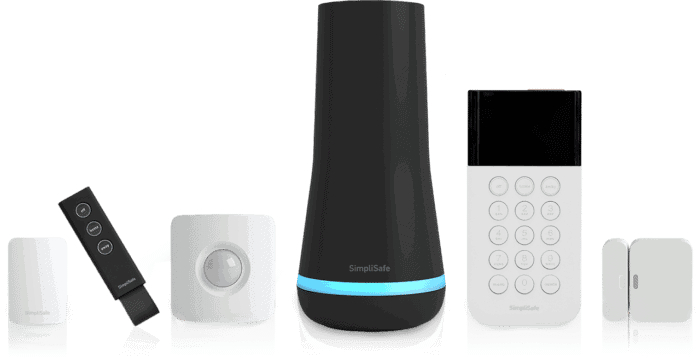
|
ADT Self Setup

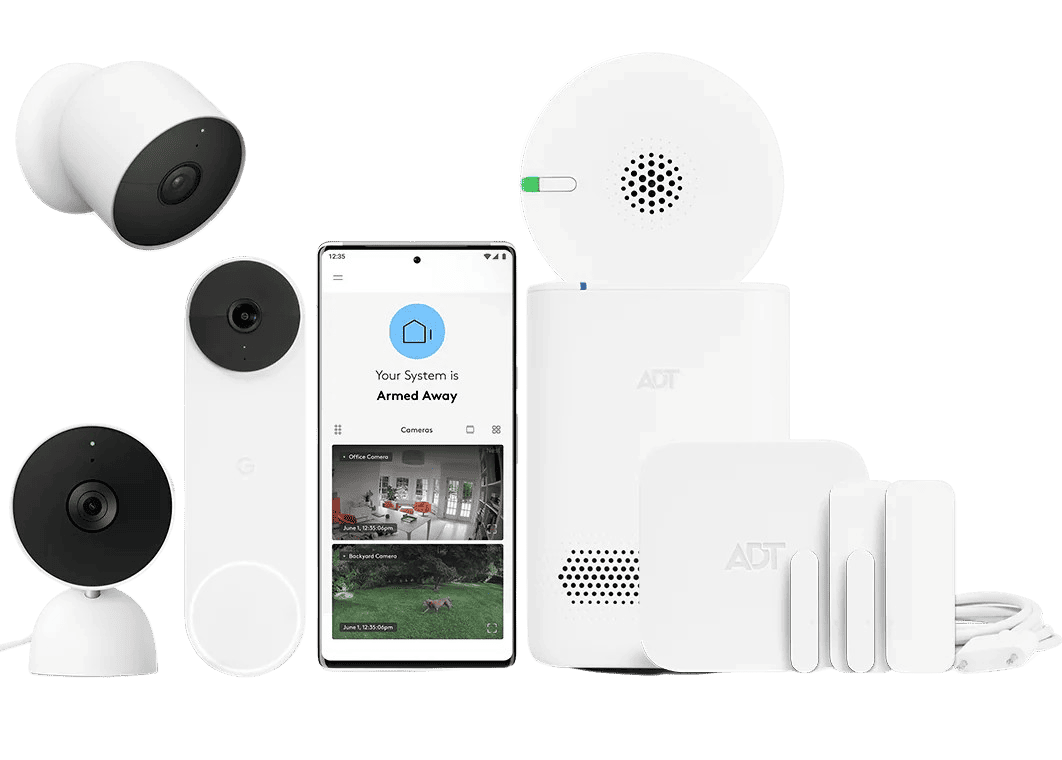
|
Cove

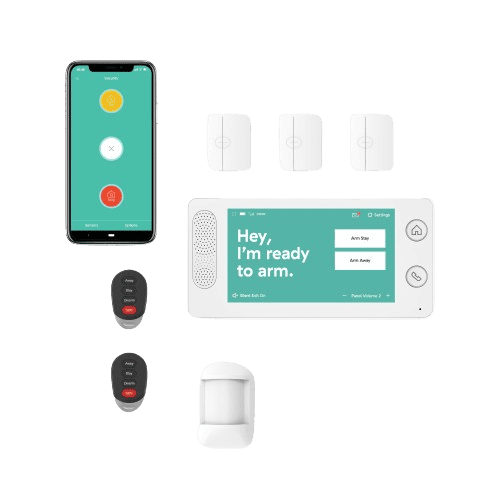
|
abode

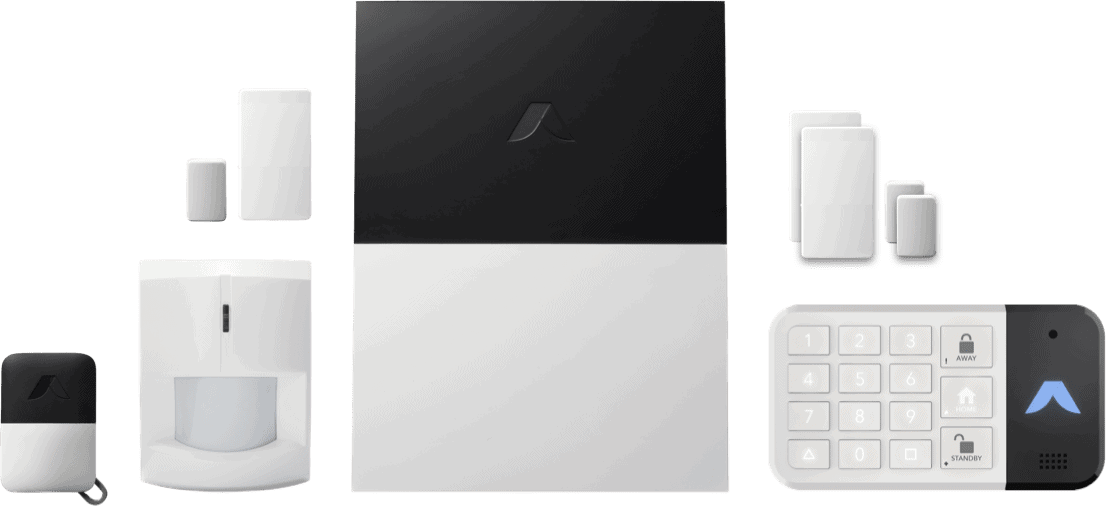
|
Frontpoint

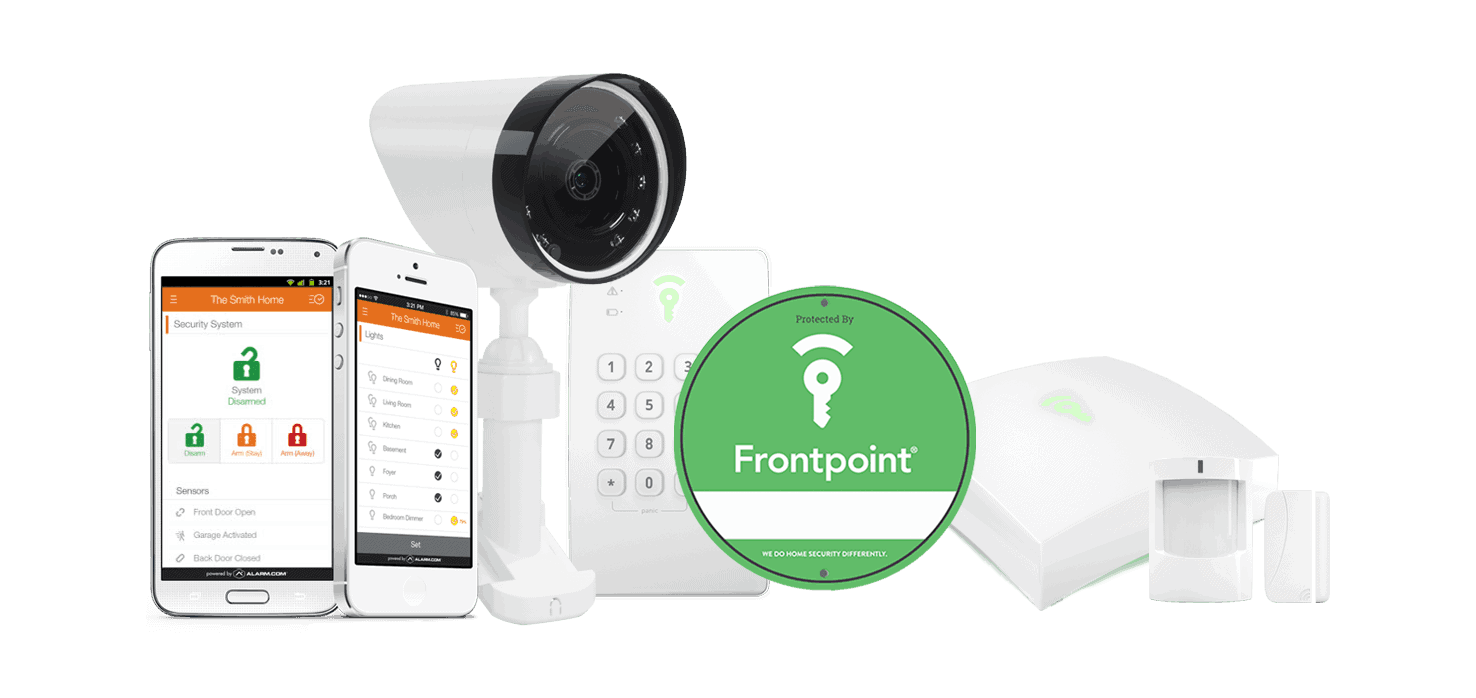
|
Deep Sentinel

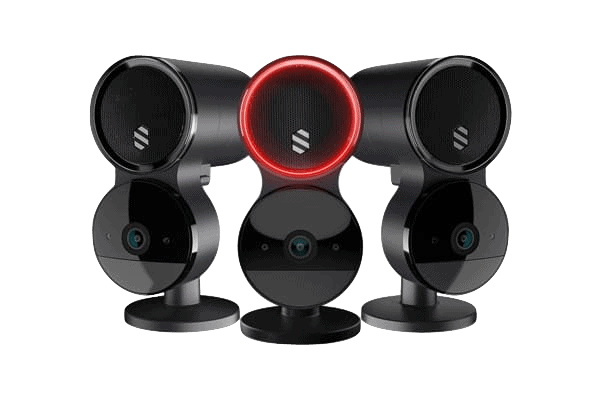
|
|---|---|---|---|---|---|---|
| Ranking | 1st | 2nd | 3rd | 4th | 5th | 6th |
| Ratings | 9.9/10 | 9.0/10 | 8.7/10 | 8.0/10 | 8.9/10 | 7.9/10 |
| Installation time | 30 minutes | 30 minutes | 30 minutes | 45 minutes | 45 minutes | 1 hour |
| Equipment tested | Sensors, security cameras, video doorbell | Sensors, security cameras, video doorbell | Sensors, security cameras, video doorbell | Sensors, security cameras, video doorbell, home automation | Sensors, security cameras, video doorbell, smart thermostat | Security cameras |
| Monitoring style | DIY or professional | DIY or professional | Professional | DIY or professional | Professional | Professional (Live Guard) |
| Professional monitoring cost (per month) | $21.99 and up | $24.99 and up | $19.99 and up | $25.99 | $49.99 | $100 and up |
| Contract required? | No | No | No | No | Yes (3 years) | Yes (1 year) |
| Read Review | SimpliSafe Review | ADT Self Setup Review | Cove Review | abode Review | Frontpoint Review | Deep Sentinel Review |
What’s The Best DIY Security System For You?
-
1. SimpliSafe - Best DIY Installation and Monitoring
Product Specs
Equipment Costs Packages starting at $250.96 Monitoring Options Professional and DIY Monthly Monitoring Costs Starts at $21.99 per month Contract Lengths Month-to-month Installation Options DIY or professional Smart Platform Integration Alexa and Google Home We found the SimpliSafe system we tested (pictured below) very reliable. It has a range of advanced features and 24/7 monitoring, so we didn’t have to jump at every push notification. While the company originally focused on security systems for renters, we feel confident in recommending SimpliSafe as one of the best security systems for large homes as well.
>> More Details: SimpliSafe Video Doorbell Pro Review
SimpliSafe Equipment
All the SimpliSafe equipment we bought was enough to cover the 2,500-square-foot house we tested it in. SimpliSafe equipment is affordable, but not cheap. We were struck by the solid, lightweight feel of the devices, especially the sensors. They are also stylish and sleek, similar to ADT equipment. That’s a great feat for SimpliSafe, which generally costs less than ADT. We went ahead and compared SimpliSafe and ADT if you’re interested in seeing how our top two DIY options compare.
We also liked how our SimpliSafe system supports cellular backup and has a 24-hour battery backup. The wired indoor camera needs constant power, of course, but most of SimpliSafe’s equipment remained on and active during an all-day power outage that affected our neighborhood.
SimpliSafe offers a wide range of sensors alongside security-focused devices like motion sensors. The hazard sensors include a carbon monoxide, water, and temperature detectors. When combined with SimpliSafe cameras, it makes for a very comprehensive safety and security system. While SimpliSafe lacks the home automation features of some competitors, integrations with virtual assistants Alexa and Google Assistant offer some smart home functionality.
SimpliSafe security cameras Price Wired Indoor Camera $99.99 Wireless Indoor Camera $149.99 SimpliSafe Outdoor Camera $199.99 SimpliSafe Video Doorbell $169.99 >> Further Reading: The Legality of Security Cameras and Video Surveillance
SimpliSafe Monitoring
Although we like SimpliSafe’s DIY aspect, we recommend pairing it with professional monitoring. Prices start at $21.99 per month for the Standard plan, which activates cellular backup and professional monitoring service. But if you have SimpliSafe cameras like we do, we recommend at least the Core plan. It costs $31.99 per month, includes everything in the Standard plan, and adds camera cloud storage, Intruder Intervention, and video verification that can speed up police response.2
Test Result: We simulated a break-in to trigger Intruder Intervention. As soon as the front door entry sensor detected us, the indoor camera came alive and we heard a voice telling us we’re on camera and that the police are on the way. All that happened within 20 seconds of us opening the front door.
We wall-mounted the battery-powered SimpliSafe outdoor camera to keep watch of our property. During our tests, we went with the $49.99-per-month Pro plan. This further expanded our protection with overnight (8 pm to 6 am local time) Active Guard Outdoor Protection. This feature works the same way as Intruder Intervention, but applied to the outdoor camera. It also uses AI to detect and distinguish potential intrusions from normal outdoor movement.
Active Guard Outdoor Protection on the Pro Plan operates from 8 p.m. to 6 a.m. If you want 24/7 coverage, you’ll need to pay for Pro Plus, which is $79.99 per month.
SimpliSafe’s plans have quite the range in price, but the good news is that there are no contracts. You can switch between subscriptions. We switched from the Pro plan to the Standard plan when we worked from home and were able to be more hands-on. We even deactivated our monitoring while in the middle of the move. This kind of flexibility is one of SimpliSafe’s best assets as a DIY system.
What We Like
- Set up in 30 minutes
- Indoor and outdoor security camera options
- Cellular and battery backup
- Optional professional monitoring
What We Don’t Like
- Live video monitoring for Wireless Indoor Camera comes with privacy risks
- Recent monitoring rate increase
- Security cameras don’t record locally
- Security cameras require a separate cloud storage plan or the Fast Protect plan to record
Installing SimpliSafe
It only took 30 minutes to set up our SimpliSafe system. Even more impressive, half of that time was spent hardwiring the Video Doorbell Pro. If you don’t include the video doorbell with you system, you can probably get it up and running in around 15 minutes.
As easy as SimpliSafe is to install, it’s not perfect. We had to charge the battery-powered outdoor camera before setting it up. It was the only setback we faced. After charging it overnight, the camera worked perfectly in the morning.
Here’s the whole process:
- We set up the base station by plugging it in, and then we turned on the keypad by removing the battery tab. They connected to each other right away.
- We downloaded the app and signed in. We also linked the base station to our app and connected it to Wi-Fi.
- Using the app, we paired sensors individually with the base station. Most of them were battery-powered, so we simply removed their battery tabs to turn them on.
- We placed the sensors. They each came with a peel-and-stick adhesive backing; very convenient.
- We plugged in the indoor camera, scanned a QR code using the app, and connected it to Wi-Fi.
- The next day, after charging overnight, we followed the same steps to connect the outdoor camera to Wi-Fi. We then mounted it out on the porch.
A quick tip: The peel-and-stick adhesive tape that comes with sensors are great if you want a fast and easy install, but we don’t recommend it for permanent installation. It tends to lose grip over time, especially when attached to concrete walls.
It’s the reason one of our motion sensors crashed, and it’s not just a SimpliSafe problem. That’s true for all DIY security systems. Whenever possible, anchor your sensors to walls using screws. Most SimpliSafe sensors come with a mounting template.
>> Read More: The Best Battery-Powered Security Cameras
Expert TakeFrom Gene Petrino, Retired SWAT Commander and Law Enforcement“I’ve investigated numerous incidents where a suspicious person was seen in the backyards of homes, checking windows and doors, and fled as soon as they realized that there were security cameras capturing their every move. In one specific situation, the suspect tried to disable the camera, only realizing that another camera was capturing his activities.” -
2. ADT Self Setup - Best Equipment
Product Specs
Equipment Costs Packages starting at $269 Monitoring Options Professional or DIY Monthly Monitoring Costs Starts at $24.99 per month Contract Lengths Month-to-month Installation Options DIY Smart Platform Integrations Alexa and Google Home ADT is best known for its professionally installed and monitored security systems. You can see it in action in our ADT review. Not too long ago, however, it introduced its own version of a DIY security system, which includes sensors from ADT, as well as high-end security cameras and a video doorbell from Google Nest. That, plus ADT’s world-class monitoring service, makes ADT Self Setup worthy of a spot on this list.
>> Read More: Google Nest Doorbell (Battery) Review
ADT Self Setup Equipment
The ADT window sensor’s new design borrows some ideas from Google Nest, including the curved form and slim profile. ADT has a reputation for high-quality security equipment. It’s not just weatherproof. It’s durable and can continue operating in the harshest conditions. The ADT Self Setup devices are no different. In fact, most of the products are the same equipment ADT sends out with its professional installers.
The highlight though are the cameras. ADT uses security cameras from Google Nest – technically a third-party – but unlike our experience with Cove, the ADT+ app managed and monitored the cameras directly. The same goes for other Google products like the Nest Hub Max. So even though we already tested the Google Nest Cam (battery) as a standalone unit, testing it and the other Nest Cams as part of an ADT system was a new and refreshing experience to us.
ADT Self Setup Monitoring
Another bonus to choosing ADT Self Setup is that the professional monitoring plans are cheaper. You can even monitor the system yourself, like you can with SimpliSafe. We recommend an ADT plan because it’s one of the best professional monitoring services on this list.
Another reason to sign up as an ADT Self Setup customer is the professional monitoring plans are cheaper than ADT’s professionally installed security systems. You can even self-monitor if you’re into that kind of thing. But considering how good ADT’s professional monitoring service is, we recommend signing up for an ADT plan.
For starters, your system will be monitored by any of the 12 ADT monitoring centers. These centers are equipped with backup generators, communication lines, and servers. You also get access to ADT’s SMART Monitoring platform, which speeds up the monitoring response time by using text-based alerts. Here’s how much the plans cost:
ADT Self Setup professional monitoring Secure Smart Complete Cost per month $24.99 $29.99 $39.99 24/7 Professional monitoring Yes Yes Yes SMART monitoring Yes Yes Yes Home automation No Yes Yes Cloud video recording (Nest Aware) No No Yes Video verification No No Yes >> Related: The Best No-Contract Security Systems
What We Like
- Mix of ADT and Google Nest equipment
- High-end security cameras with person and package detection
- Nest Aware subscription included in Essential + Video plan
- Affordable professional monitoring
What We Don’t Like
- Limited sensor options
- No included keypad (costs an extra $89.99)
- Bulky hub
- Not as smart home-friendly as other options
Installing ADT Self Setup
Right off the bat, we noticed the hub’s bulky form. It stood about six inches tall and was about 4.5 inches wide at the base. Fortunately, it’s now cylindrical, so it takes up less space than the rectangular one ADT had before. The LED ring around the top that doubled as a night light for us was also a nice touch.
Because it’s battery-powered, we installed the Nest Cam (battery) high up to give it a better vantage point. ADT Self Setup didn’t include a touch screen keypad, so unlike with Cove, we had to setup everything through the ADT+ app. We first connected the hub to our phone via Bluetooth, and then entered our Wi-Fi information to connect the hub. After that, we paired sensors. The initial setup took less than 10 minutes all in all.
After that, we set up the Nest Cam cameras and the Nest Hub Max smart display. They were previously set up with our Nest account from when we reviewed them, but if it’s your first time setting them up, allot about five minutes for each camera and device. In our case, though, we just logged into our Google Nest account on the ADT+ app to pair the Nest devices.
Note: The hub only connects to 2.4 GHz Wi-Fi channels. If you have a dual-band router, make sure you connect your phone to the 2.4 GHz band before pairing the hub. If you’re connected to the 5 GHz channel, it simply won’t connect.
-
3. Cove - Most Affordable
 View Packages Links to Cove
View Packages Links to CoveProduct Specs
Equipment Costs Systems start at $90 Monitoring Options Professional only Monthly Monitoring Costs Starting at $19.99 per month Contract Lengths Month-to-month Installation Options Professional or DIY Smart Platform Integration Alexa and Google Home 
You can install a Cove security system yourself, but you’ll need a monitoring subscription for it to work. Looking at Cove’s prices, it’s not going to break the bank. For our review, we scored an eight-piece system for just $30. This isn’t unusual – Cove is always running sales with prices slashed by up to 60 percent.
>> Related: Affordable but Top-Quality Security Systems
Cove Equipment
Without installation fees and with a less than $300 price tag, this Cove security system is the most affordable DIY option we tested. Cove let us pick from a wide range of security and safety components. They aren’t as high-quality as the sensors from ADT Self Setup and SimpliSafe. In fact, they feel plastic-y and a little on the lightweight side. We were careful not to accidentally drop them this time.
Cove’s cameras are from the brand Eufy. They offer great specs, like 2K video quality, but just like the sensors, they don’t feel as durable as our top security camera options, such as the ones from Lorex. (See our Lorex review.) In any case, they are affordable. We got one outdoor camera for free, and an indoor camera for $59.99 with discounts applied.
>> Learn More: Eufy 2K Camera Review
Cove Monitoring
Cove offers two professional monitoring plans and a self-monitoring option for $9.99. Since it only includes camera streaming and alert notifications, we don’t recommend it. Here’s how the professional monitoring plans compare.
Features Cove Basic Cove Plus 24/7 alarm monitoring Yes Yes Text-based alerts Yes Yes Cellular backup Yes Yes Camera support No Yes Alexa and Google Home voice control No Yes Price $19.99 per month $29.99 per month The main difference between the plans is voice control from Alexa and Google Home and camera support. That means if you plan on including security cameras as part of your system, you have no choice but to go with the more expensive option. ADT Self Setup does the same thing, but its top plan costs $39.99. So Cove Plus is a pretty good deal when you look at it that way.
FYI: Cove Plus also upgrades the equipment warranty from one year to lifetime. But only if you stay signed up to the Plus plan. In our opinion, that’s well worth the $10 increase, which is why it’s what we went with.
What We Like
- Affordable equipment and frequent deals
- Systems are fully customizable
- Ships pre-paired sensors and equipment
- Professional monitoring with security camera support for less than $30 per month
What We Don’t Like
- Some pieces of equipment don’t seem durable
- No smart home automation features
- Limited security camera options
- Security cameras are accessed via a third-party app
A look at our complete Cove system, including security cameras from Eufy. Installing Cove
Cove gets high DIY marks for its ease of installation. Every Cove system arrives paired and ready to work. All we had to do was switch on the base unit and set up the touchscreen control panel. We only needed to pull our phone to link our Cove account to the system. The touchscreen guided us through the whole installation, and having a touchscreen included is impressive given Cove’s low pricing.
Once the system was fully installed, we activated the monitoring subscription, did a test run with customer support, and that was it! It was simple, user-friendly, and straightforward, exactly what you want from a DIY system.
>> Also See: The Best Security Systems With Apps
Our biggest qualm with using the system had to do with the fact that Cove’s cameras are supplied by Eufy. While the quality of these cameras is fine, we couldn’t monitor and manage them using the Cove app. So, we had to use the Cove app for our sensors and log into Eufy to check our videos. It’s not the most convenient setup.
Pro Tip: ADT Self Setup also uses security cameras from a different manufacturer. But unlike Cove, ADT integrates them into the same app so it’s easier to manage the security system.
-
4. abode - Most Flexible Monitoring Options
Product Specs
Equipment Costs Packages starting at $159.99 Monitoring Options Professional and DIY Monitoring Costs Starting at $6.25 per month Contract Lengths Month-to-month or Yearly Installation Options DIY or professional Smart Platform Integration Alexa, Google Home, and Apple HomeKit abode is a lot like SimpliSafe but includes better home automation features, making it a strong choice for anyone who wants a high-tech security system. abode works with a number of third-party devices, including Z-Wave, Zigbee, and even HomeKit products. (That’s why it’s one of the best security systems for Apple users.) Of course, all that means a more complex setup process, as we learned firsthand.
>> Related: The Best Smart Home Security Systems
abode Equipment
We tested the abode iota All-in-One security system, the most advanced security system from abode. abode security systems are anchored by a hub, for which abode offers three options: Smart Security Hub, abode Security Hub, and iota All-in-One Hub.
Smart Security Hub abode Security Hub iota All-in-One Hub No built-in camera No built-in camera Built-in camera Ethernet-only Ethernet or Wi-Fi Ethernet or Wi-Fi Loud siren Loud siren Loud siren Alexa, Google Assistant, HomeKit, Z-Wave, Zigbee Alexa and Google Assistant Alexa, Google Assistant, HomeKit, Z-Wave, Zigbee No built-in motion sensor No built-in motion sensor Built-in motion sensor The abode pricing for packages is based on the hub and range between $59 for the most basic kit to $249 for the iota security bundle. The larger security bundles include entry sensors, acoustic sensors (a.k.a. glass-break sensors), and motion sensors. For our tests, we decided on the iota hub package because we wanted to test the hub’s capabilities. We also added an indoor camera, smart bulbs, and smart plugs.
Product Stats: abode doesn’t offer smoke alarms, but it has a sound sensor that listens for the patented high-pitched beep. Before you buy one, we suggest checking your smoke alarm’s sound frequency to ensure it’s detectable by abode.
Expert TakeFrom Gene Petrino, Retired SWAT Commander and Law Enforcement“Many of the false alarms we responded to were from DIY systems. I remember one instance where the homeowner installed the system but never set up notifications. The neighbor called an alarm activation to the police department when they heard the audible alarm activate, and the homeowner was completely unaware. We were able to determine that the activation was caused by a fan blowing a balloon which set off the motion sensor.”abode Monitoring
We like that abode offers flexible monitoring plans. You can get a free self-monitoring plan, a premium self-monitoring option for $6.25 per month, or a professional monitoring subscription for $16.67 per month for the first year.
abode has the most flexible monitoring options we’ve ever seen. It has free self-monitoring, premium self-monitoring ($6.25 per month), and professional monitoring ($16.67 per month for the first year).
We initially went with the premium self-monitoring option, called Standard, which gave us 10-day video history, person detection for our cameras, access to the CUE home automation engine (similar to IFTTT), and priority customer support. Note: No professional monitoring.
>> Learn More: The Best Security Systems With IFTTT Support
One downside of abode is that it offers only one camera – the abode Cam 2 that works indoor and outdoors. After one month, however, we felt that we needed more, so we upgraded to professional monitoring. The main reason was the ability to access cellular backup. Although we connected the hub via an Ethernet cable (which is more reliable than Wi-Fi), we know our internet cuts out occasionally. Cellular backup made sure abode was always online. That alone made the abode home security system plan worth it.
>> Learn More: The Best Security Systems With Cellular Backup
What We Like
- Choice between different types of hubs
- Affordable security cameras (as low as $29.99)
- Quick and easy DIY installation
- Free and premium monitoring plans
What We Don’t Like
- Lots of missing features from free monitoring option (e.g., home automation)
- Internet-reliant without professional monitoring
- No cellular backup even for premium self-monitoring plan
- No smoke alarms or carbon monoxide detectors
Installing abode
The installation of our abode system followed a familiar sequence: Set up the hub and connect the devices. The one unusual part was connecting the router with an Ethernet cable. This was required to initialize the hub by registering the Wi-Fi SSID and password on the app. Although you can disconnect the Ethernet cable after setting up the hub, the wired connection is slightly more reliable.
As for the sensors and other components, we didn’t have much trouble pairing them. The entry sensors came pre-paired with the hub, so after pulling out their battery tabs, they paired instantly. For the camera, however, we had to initiate the pairing process via the abode app. It took about five minutes – roughly as long as it took us to set up our Nest Cam (battery). All in all, we set everything up in less than 45 minutes.
-
5. Frontpoint - Best Customer Service
Product Specs
Equipment Costs Starting at $69.00 Monitoring Options Professional only Monthly Monitoring Costs Starting at $14.99 Contract Lengths 1-36 months Installation Options DIY Smart Platform Integration Alexa and Google Home Frontpoint is another system on our list that’s DIY only in terms of its installation. However, that technicality is overshadowed by the exceptional customer Frontpoint provides. A lot of false alarms are caused by bad DIY installations, and having a company that provides great support can significantly cut down on mishaps. The company regularly gets high marks for its customer service, and our own brush with service during setup, which we’ll share below, left us feeling satisfied.
>> Further Reading: Frontpoint FAQs
Frontpoint Equipment
Our starter Frontpoint security system with a touch screen keypad (bought separately). We built a custom Frontpoint system from scratch, starting with the basic kit that costs $129. It included a hub, a motion sensor, and an entryway sensor — pretty bare bones — but we expanded it by adding more sensors, security cameras, and even a smart lock and thermostat. All in all, we spent over $500 on equipment.
FYI: If the upfront costs are too much of a strain on your bank account, you can finance your equipment and pay it off over 36 months.
Take note that Frontpoint occasionally offers discounts. You can sometimes get the basic kit for as low as $69, and add-on equipment sometimes has markdowns of up to 60 percent. We say take advantage of those deals if possible; Frontpoint isn’t the cheapest option around.
>> Alternative Options: The Best Security Systems Without Credit Checks
Frontpoint Monitoring
Frontpoint requires a monitoring subscription and pushes its Ultimate Monitoring plan for $49.99 per month. We signed a three-year contract for this plan as part of our testing process. It included cellular backup, cloud storage, and home automation features.
Frontpoint also offers a self-monitoring video-only plan, which includes storage. Alternatively, you can choose the Interactive Monitoring plan. It adds hazard professional monitoring for fires and floods. You need to speak to someone to discuss these Frontpoint plans.
What We Like
- Customer support available until 11 p.m. (EST)
- 30-day money-back guarantee and three-year equipment warranty
- Semi-affordable equipment
- Functional app
What We Don’t Like
- Universal monitoring pricing for all systems
- Three-year contract
- Limited smart home options
- May require a credit check
Installing Frontpoint
Our Frontpoint installation didn’t go as smoothly as our SimpliSafe and abode installations. We got the package late afternoon and immediately got to setting it up, starting with the hub. We plugged it into a wall outlet and then opened the Frontpoint app on our iPhone, which guided us through setting up the hub and pairing it with the keypad. So far, so good.
Next, we connected the sensors and the cameras. The sensors had a ‘pair’ button that we pressed and held to make them discoverable. On the other hand, since the cameras needed a Wi-Fi connection, we set them up via the app. It was a standard security camera installation.
Frontpoint Indoor Camera One door sensor, however, refused to connect even after several tries, so we skipped it to finish the rest. After about 30 minutes, we circled back to it and spent another 15 minutes or so trying to connect it. It was past seven o’clock when we decided to give Frontpoint a call. We were surprised we actually got through. Most alarm companies don’t have customer support after normal office hours.
The agent we spoke with helped us troubleshoot the door sensor and after a few minutes, he concluded that it must be broken. Frustrating, yes, but things like that happen when you DIY. The silver lining though, was that he immediately put in a request for a replacement, which was delivered to us two days later. That’s top-notch service, in our opinion.
FYI: No company is perfect, so while we had a great experience with Frontpoint and believe it has better customer service than most, it’s not a guarantee that all interactions with Frontpoint customer support will end like it did for us.
-
6. Deep Sentinel - Best Video Monitoring
View Packages Links to Deep SentinelProduct Specs
Equipment Costs Starting at $399 Monitoring Options Professional and DIY Monthly Monitoring Costs Starting at $60 Contract Lengths 1-12 months Installation Options DIY Smart Platform Integration None Deep Sentinel relies on AI-powered cameras to detect intrusions, similar to Arlo and Lorex models. But what sets Deep Sentinel apart is it offers live video monitoring. It’s similar to SimpliSafe’s Active Guard Outdoor Protection.
Of course, having strangers monitor your camera can be a cause for privacy concerns. To fix that, Deep Sentinel has a thorough vetting process for its monitoring agents. On top of that, Deep Sentinel requires that its cameras be placed outdoors — never indoors. That way, they can stop burglars before they get in while also preserving your privacy.3
>> Further Reading: Do Security Cameras Deter Crime?
Deep Sentinel Equipment
The indoor-only hub is the center of the Deep Sentinel system. We used ours to store videos and charge our battery packs one at a time. Deep Sentinel offers only security cameras. They are battery-powered and come with removable batteries, plus each system requires a hub that provides local video storage and doubles as a charging station.
The specs of the camera are decent. It’s comparable to the Arlo Pro 3 we reviewed — with a weatherproof casing, three-month battery life, a 130-degree viewing angle, two-way talk, and AI person detection — but with slightly lower video resolution. Deep Sentinel is 1080p, while Arlo Pro 3 is 2K.
Deep Sentinel Monitoring
The most interesting aspect of Deep Sentinel is its monitoring. First, let’s cover the cost. As we expected, Deep Sentinel’s pricing is higher than others on this list. It costs a whopping $100 per month for one camera, plus $50 per month for each additional camera. That’s $200 per month for our three-camera system. Deep Sentinel isn’t cheap, and here’s why.
When the camera detects a possible intruder, it starts streaming to the LiveSentinel monitoring center, where a trained guard will verify if it’s a real threat. If it is, they’ll use the camera’s two-way audio to warn the intruder and scare them off. If that doesn’t work, Deep Sentinel will call the police to submit a verified dispatch request. Is it worth the expensive monthly fee? Maybe for some, but it’s not for everyone.
>> Alternative Options: The Best Outdoor Security Cameras
What We Like
- Live video monitoring and response
- AI-powered detection and human verification
- Local and cloud recording included
- Easy DIY installation
What We Don’t Like
- Expensive hardware ($499 for one camera and hub)
- Perimeter security only
- Potential privacy issues
- Short battery life (2 to 3 months)
These weird-looking contraptions are actually our outdoor cameras from Deep Sentinel, with large speakers for clear audio during live guard response. Installing Deep Sentinel
The Deep Sentinel equipment looked intimidating to install, but the setup process was actually quite easy, especially Deep Sentinel pre-paired the cameras before shipping. We first set up the hub, which connected to our router via Wi-Fi. Once it was on, we inserted the large, cylindrical batteries into the cameras. They booted up and paired with the hub in seconds.
What ate up most of our time was installing the cameras. It helped that they were wireless with a 100-foot wireless range, but we still had to experiment with the positioning to make sure they had a clear view of the most important areas — our front door, the pathway to our house, and our backyard. All in all, we spent about 45 minutes mounting the cameras, in addition to the 15 minutes we spent unboxing them.
FYI: Deep Sentinel also offers Power over Ethernet (PoE) cameras, which are more reliable than their wireless cameras. However, these PoE cameras require professional installation.
Why DIY? The Pros of DIY Security
Having a security system dramatically improves your home’s safety and protection from crime, but professionally installed security systems can be quite pricey. Not only is the equipment cost higher than most DIY systems, but there’s also the installation cost, which usually reaches over $100. In contrast, DIY security systems are not only more affordable equipment-wise, but there are also no installation or activation fees. DIY security systems are practical.
>> More Information: How Much Is a Security System?
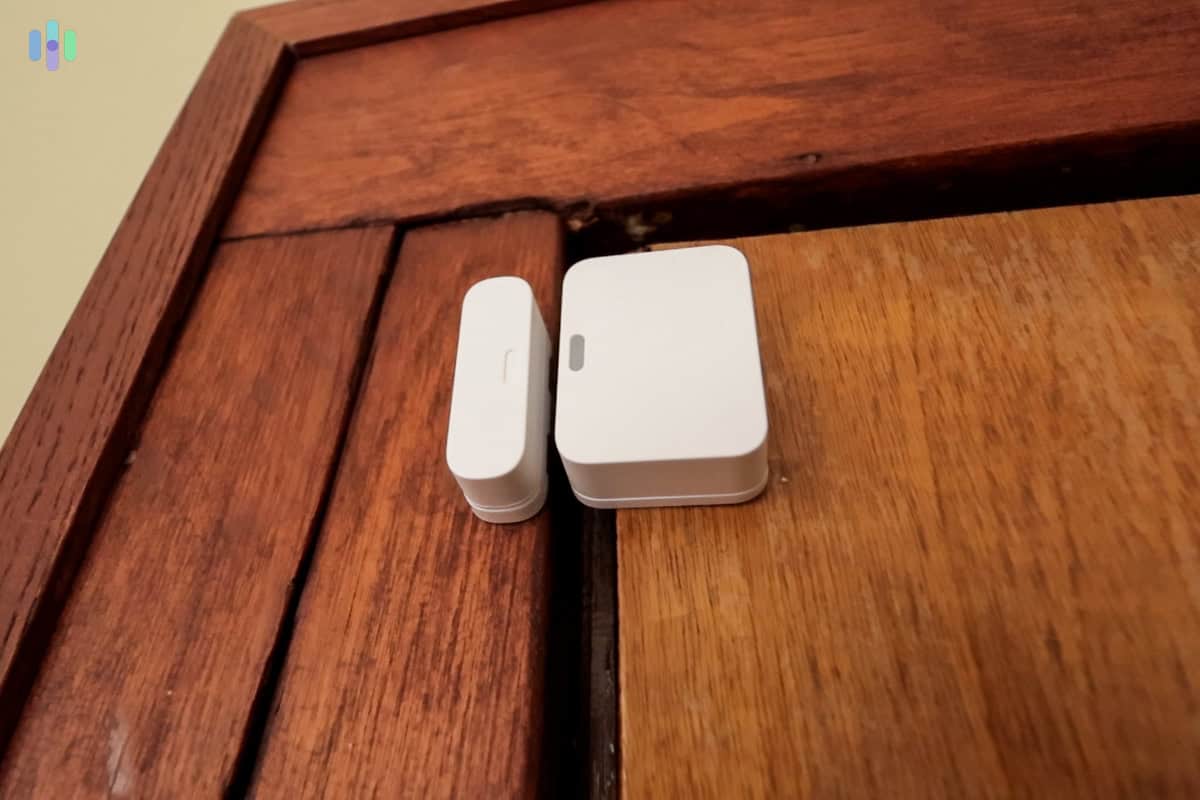
On top of that, they’re convenient. You don’t have to wait around for a technician to show up. If you’ve had a security system professionally installed before, you know they don’t usually give you a specific time for your appointment. They give you a window — sometimes two hours, sometimes an entire afternoon. With a DIY system, you can do it in your spare time (even in the evening, like we did with Frontpoint).
Here are some other pros of DIY security systems:
- Easy to move: Because they’re wireless, DIY security systems are easy to move to a different address. In most cases, you simply box them up and reinstall them in your new home. You can’t do that with most hardwired systems.
- Renter-friendly: Again, because they’re wireless, you likely won’t lose your security deposit after installing a DIY security system. Most sensors attach to walls with adhesive, and very few components — if any — require drilling.
- Cheaper or optional professional monitoring: Not all DIY security systems require professional monitoring. You can self-monitor instead, but it means you’re responsible for contacting emergency services. Instead of putting this burden on yourself, we’d recommend checking out affordable professional monitoring plans from SimpliSafe and Cove.
>> Read More: DIY Installation vs. Professional Installation
Things to Consider: The Cons of DIY Security
All those benefits of DIY security systems also come with disadvantages. Otherwise, professionally installed systems would be phased out. Here are some points to consider before fully deciding to buy a DIY security system.
- Prone to incorrect installation: We’re not perfect. Even technicians whose bread and butter is installing security systems make mistakes; this applies doubly so to those of us who have no special training. What’s more, it’s your home’s security on the line here.
- Warranties are limited: In the same vein, since you’re doing the installation work, DIY systems often have limited warranties, and repairs stemming from incorrect installation will be your responsibility. In contrast, professionally installed systems often come with lengthy warranties and guarantees, like ADT’s six-month money-back guarantee.4
- Limited equipment options: In their bid to make installation as easy as possible, most DIY systems limit the type of equipment they offer. ADT Self Setup, for example, doesn’t offer wired video doorbells, so you’re stuck with the battery-powered option that requires recharging from time to time.
>> See Also: The Best Video Doorbells of 2025
What To Look For in a DIY Security System
We can see from those examples that the biggest downside of DIY security systems is the fact that you’ll do the installation yourself, which can be prone to mishaps. However, if you do that part right, DIY security systems are actually great. So here’s our solution: Look for a DIY security system that will give you the best chance of installing the system correctly.
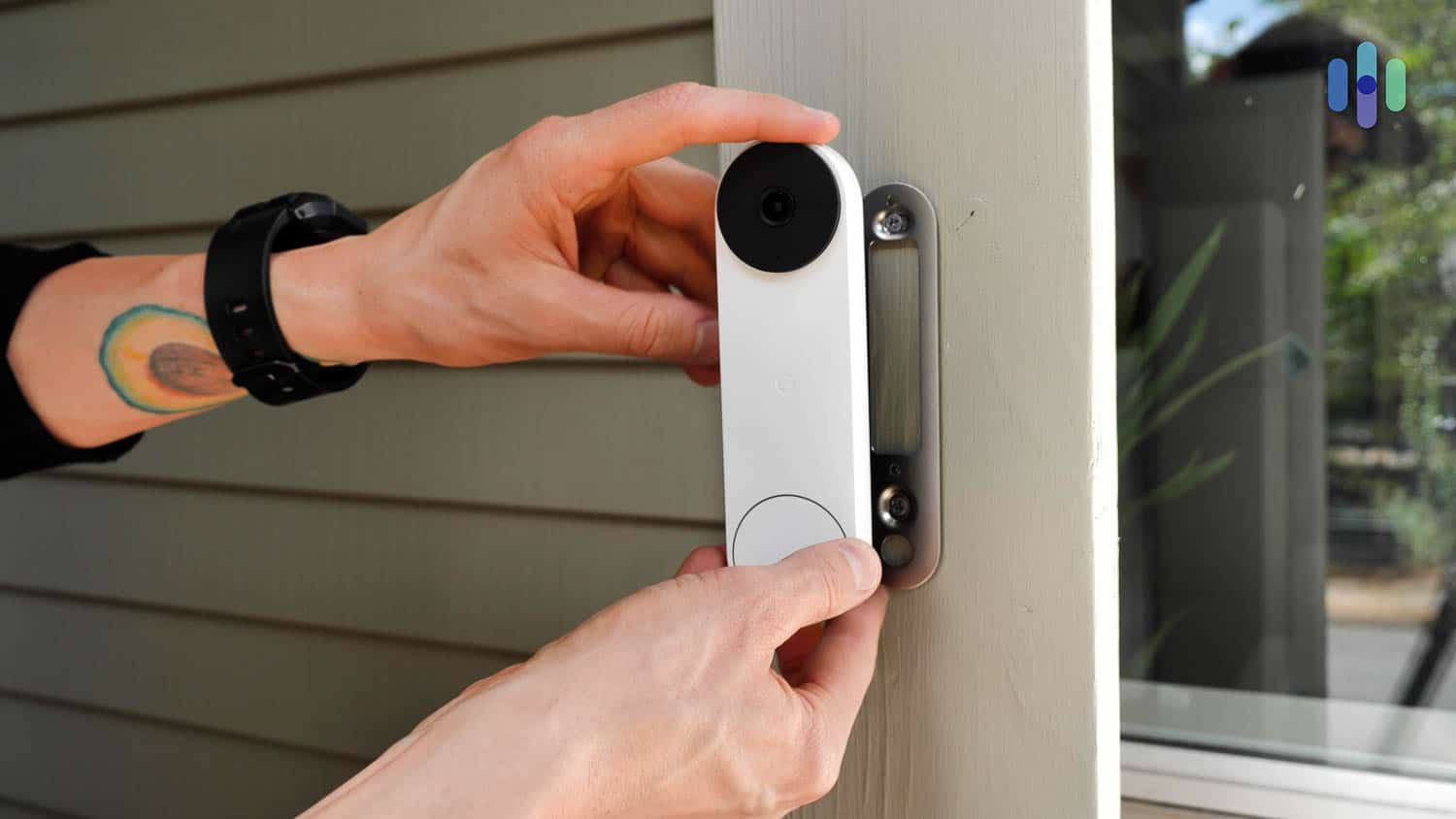
Here’s what you should look for:
- Wireless: The key ingredient is being wireless. A hardwired security system is too much to handle for someone without training. And besides, most wired systems require professional setup.
- User-friendly app: As we saw earlier, most DIY systems rely on an app for setup, monitoring, and control. That’s an advantage, unless you end up with an app that hardly ever works, so choose a system with a working and user-friendly companion app.
- Customer service: And last but not least, don’t discount the importance of customer service. You’ll do the setup yourself, but you shouldn’t feel like you’re on your own. After all, who’s better to help you than the company from which the equipment came? Instruction materials and troubleshooting guides also fall under customer service.
Outside of those factors, remember that you should be getting a security system that meets your needs — even with the limited components of most DIY systems. Generally, these are the types of equipment you’ll want to find:
- Security sensors: These are door sensors, motion sensors, glass-break sensors, garage tilt sensors, and others that you can use to detect possible break-ins.
- Safety sensors: These sensors are designed to detect other types of home dangers, like fire and gas leaks. There are also safety sensors designed to detect non-life-threatening incidents like flooding or burst pipes.
- Security cameras: Security cameras can widen the scope of your monitoring ability. They give you visual access to your home when you’re not there. Plus, you can use them to communicate with family members or unwelcome guests.
- Video doorbells: Similar to security cameras, video doorbells provide visual access and two-way communication, but specifically for your front door.
- Smart home devices: These are optional, but home automation can help make your home even safer. For example, lights that turn on when a door or window is opened can scare away burglars.
>> More Options: The Best Security Cameras of 2025
Recap
DIY security systems are fun. Installing and testing them is one of our favorite parts of our job. As a homeowner, however, choosing a DIY security system is a serious matter. It’s one that requires careful consideration. We know that, which is why we urge you to take your pick from our list of the best DIY systems. These are systems we tested ourselves, and they are also some of the best security systems on the market today.
Of course, you’re free to make your own decision. If none of the options we recommended above seem like a good fit, take a look at our home security guide, which discusses how to best pick a security system for your specific setup, wants, and needs.
Frequently Asked Questions
While you think more about DIY home security, we’ll answer the questions we get the most.
-
What is the best “do it yourself” security system?
The best “do it yourself” or DIY home security system is SimpliSafe. With SimpliSafe, we installed the entire security system in 30 minutes and self-monitored it without monthly fees. It is the best, though, because it offers optional and contract-free professional monitoring options with really advanced features like live video monitoring.
-
What is the best home security system without a monthly fee?
We also consider SimpliSafe the best home security system without a monthly fee, because even if you self-monitor the security system, you’ll have access to the SimpliSafe app and almost all features of the equipment. One thing missing though is cloud video storage, but if you want your cameras to record, you can add just cloud storage for $9.99 per month.
-
Which is better, SimpliSafe or Ring?
Both are DIY security systems with self-monitoring and professional monitoring options, but SimpliSafe is slightly better. It has a more proven track record, plus it offers a wider variety of home security equipment. Ring offers more security camera and doorbell camera options, though, so that’s one thing to consider if you’re deciding between the two.
-
Will I have to go through a credit check to buy a DIY security system?
Not always, but buying a DIY security system doesn’t guarantee that you won’t need a credit check. If you finance your equipment, the security system provider or their financing partner will have to check your credit worthiness. However, if you purchase your equipment upfront, you won’t need a credit check. Most DIY security system providers have that option.
-
Are DIY security systems suitable for large homes?
Yes, there are DIY security systems that work well in large homes, including SimpliSafe, Cove, ADT Self Setup, Frontpoint, and abode. That being said, installing security equipment in a larger home requires more effort and time, which is why we typically recommend professional installation.
-
SimpliSafe. (2024). Does SimpliSafe® Integrate With Other Smart Home Devices?
support.simplisafe.com/articles/using-your-system/does-simplisafe-integrate-with-other-smart-home-devices/634492857c2ab96af9f1d6f6 -
National Monitoring Center. (2024). VIDEO VERIFICATION
nmccentral.com/video-verification/ -
Deep Sentinel. (2024). See How Deep Sentinel Works
deepsentinel.com/how-deep-sentinel-works/ -
ADT. (2024). Residential Security – Terms and Conditions
adt.com/about-adt/legal/residential-terms-and-conditions


